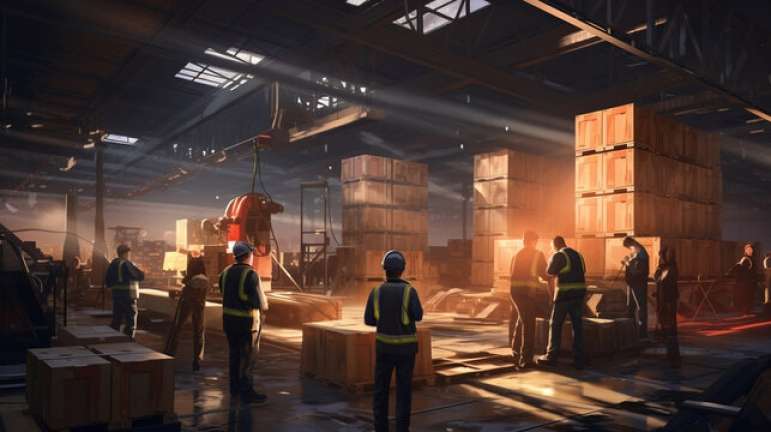Video restoration is a vital aspect of preserving precious memories and historical footage. Whether you’re a filmmaker working on restoring an old film or a hobbyist looking to enhance home videos, having the right video restoration software can make a significant difference in the final results. Here are the top 6 video restoration software solutions that can take your next project to the next level
- UniFab Video Enhancer
UniFab Video Enhancer is a powerful video restoration software tool that is perfect for beginners looking to enhance their video editing skills. With its user-friendly interface and extensive range of features, it restores and enhances your videos with professional-grade quality.
This software offers a wide range of features that make it easy to upscale video resolutions up to 4K, enhance colors with HDR effect, remove noise, and deinterlace footage. With its user-friendly interface, even those who are new to video editing can quickly learn how to use UniFab Video Enhancer to create professional-looking videos.
For beginners who are just starting in the world of video editing, UniFab is an excellent choice. Its intuitive interface, powerful features, and affordable price make it a valuable tool for anyone looking to improve the quality of their videos. Whether you’re editing home videos or creating content for your online channels, UniFab Video Enhancer can help you take your videos to the next level.
– Pros:
* Supports a wide range of video formats.
* Easy-to-use and beginner-friendly.
* Support ai video upscaling your video to 4K HDR
* Support video editing, compressing, and converting
– Cons:
* Windows Only
* May require a powerful computer to process videos in a reasonable timeframe.
- Topaz Video Enhance AI
Topaz Video Enhance AI is an upscale software that uses machine learning to upscale videos up to 8K resolution, improve texture, and reduce noise and artifacts.
– Pros:
* High-quality video upscaling results.
* Intuitive interface suitable for users of various skill levels.
* Continuous updates and improvements.
* Supports a wide range of video formats.
– Cons:
* Higher price point than some competitors.
3. Adobe After Effects with AI plugins
Adobe After Effects is a digital visual effects and motion graphics software that, with AI-powered plugins, can offer video restoration capabilities. Targeting professionals in motion graphics and visual effects, After Effects serves those who also require sophisticated video restoration.
– Pros:
* Integration with Adobe Creative Cloud services and software.
* Advanced video editing features beyond restoration.
* Support from a vast community and wealth of training resources.
– Cons:
* Expensive subscription-based pricing model.
* Steeper learning curve for beginners.
4. DaVinci Resolve Studio
DaVinci Resolve Studio is a combined video editing, color correction, visual effects, and audio post-production software that includes neural network-based AI tools for video restoration. It’s a go-to solution for professionals in film and television post-production who need high-quality restoration.
One of the standout features of DaVinci Resolve is its advanced color correction capabilities. Whether you’re looking to fix color issues or enhance the overall look of your footage, DaVinci Resolve provides you with the tools you need to achieve stunning results. The software also offers a range of editing options, allowing you to cut, trim, and merge clips with ease.
In addition to its editing and color correction features, DaVinci Resolve also includes a powerful audio editing tool. This allows you to clean up sound quality, add effects, and ensure that your video has crisp and clear audio.
– Pros:
* All-in-one post-production suite with extensive features.
* One-time purchase rather than a subscription model.
* Strong community and industry acceptance.
– Cons:
* Complex for beginners.
* Requires high-performance hardware for the best experience.
5. AVCLabs Video Enhancer AI
AVCLabs Video Enhancer AI is designed to upscale low-resolution videos to higher ones using deep learning and enhance the video quality. Geared towards enthusiasts and professionals looking for video enhancement without in-depth technical expertise.
– Pros:
* User-friendly interface.
* Multiple AI models for different tasks (denoising, deinterlacing, etc.).
* Affordable pricing compared to some alternatives.
– Cons:
* May not match the quality level of high-end competitors.
* Limited functionality beyond video upscaling and enhancement.
6. Neural.love Video Enhancement
Neural.love Video Enhancement uses AI and deep learning to restore and enhance vintage footage, improve resolution, and upscale video. Positioned for users with historical footage, such as archivists, and general users interested in reviving old family videos.
– Pros:
* Specializes in enhancing and restoring old or damaged footage.
* Online platform – no software installation required.
* Flexible pricing with a pay-as-you-go model.
– Cons:
* Dependent on internet connection for processing.
* May not offer the extensive range of video editing tools that some competitors have.
Wrap Up
As technology continues to advance at a rapid pace, the future of video restoration technology looks incredibly promising. One of the most exciting trends in this field is the use of artificial intelligence and machine learning algorithms to enhance the quality of restored videos. These advanced technologies can analyze and repair damaged or degraded footage with unprecedented speed and accuracy, resulting in stunning results that were previously unimaginable.
Overall, the future of video restoration technology is bright, with exciting advancements on the horizon that promise to revolutionize the way we preserve and restore precious video footage. By embracing these future trends and staying abreast of the latest technological developments, video restoration professionals can continue to push the boundaries of what is possible in the world of digital restoration.
Read More: How to Get Started With AI















